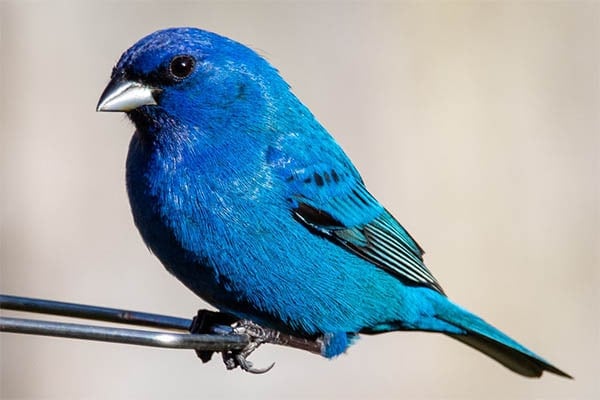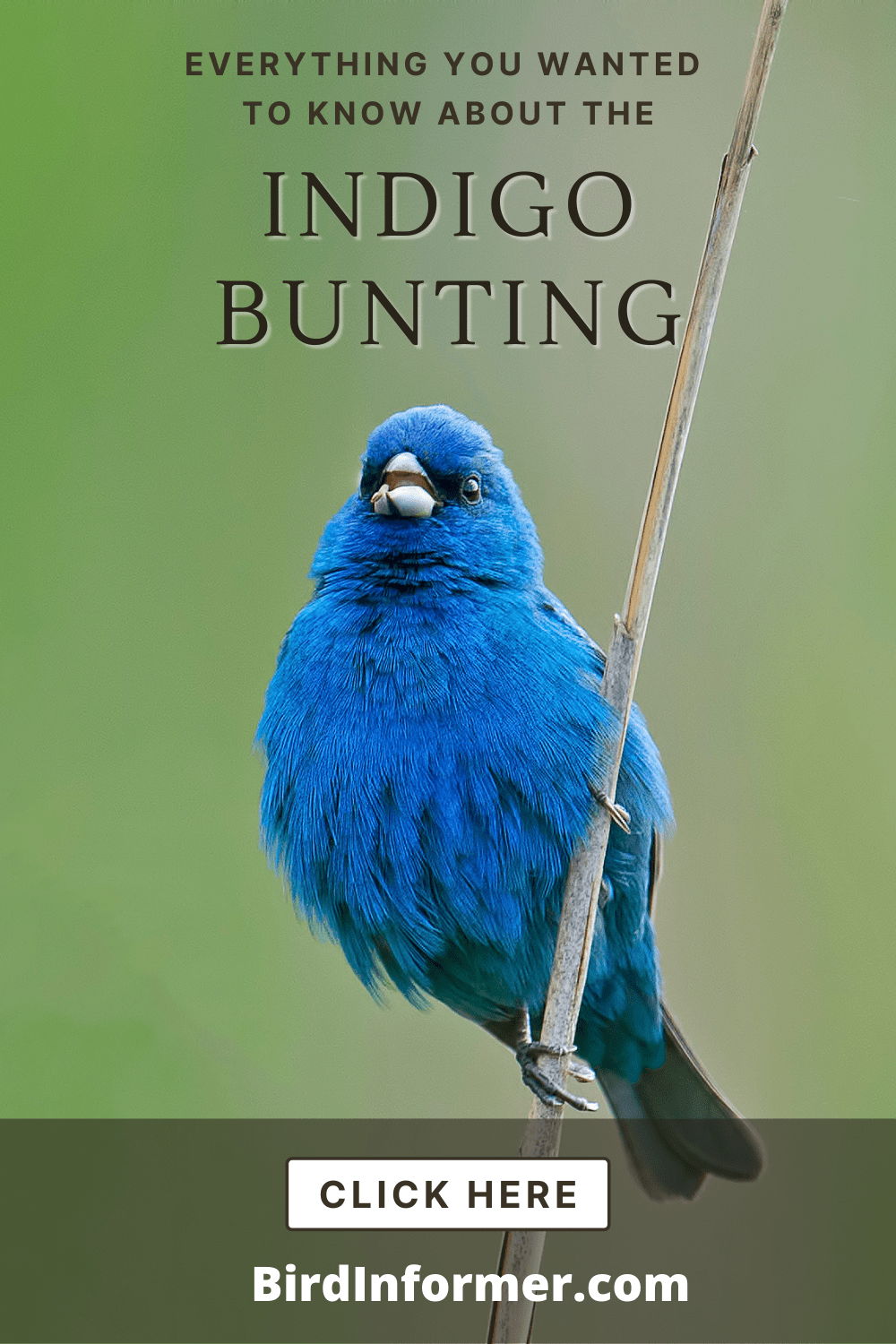Contents
- Indigo bunting facts
- Indigo bunting: how-to identify
- Indigo bunting bird vocalization
- Where You’ll See Indigo Buntings
- Indigo bunting diet
- Indigo bunting nesting
- Indigo bunting behavior
- How-to attract indigo buntings
- Indigo bunting threats
- Indigo bunting fun & interesting facts
- Indigo bunting related species in this family
The Indigo Bunting is a bright blue-colored bird that is found throughout eastern North America. They are fascinating to see that most people describe them as pieces of the sky when they fly. These birds are often found in low elevations and open areas where there are many trees and shrubs.
In this article, we are going to cover a wide variety of topics related to the Indigo Bunting, such as:
- How to identify them
- How, when, and where they migrate
- Their diet
- How and where they nest
- And much more…
So, without any more delay…
Let’s jump right into it and learn more about the Indigo Bunting.
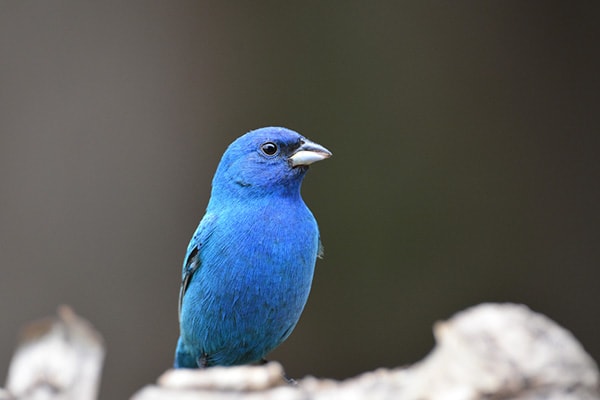
Indigo bunting facts
- Common Name: Indigo Bunting
- Scientific Name: Passerina cyanea
- Scientific Family: Cardinalidae
- Life Span: 10 years
- Size: 4.7 to 5.1 inches
- Wingspan: 7.5 to 8.7 inches
- Weight: 0.4 to 0.6 oz
- Conservation status: Least Concern (LC)
Indigo bunting: how-to identify
Ìndigo Buntings are small-sized birds that are only about 4.5 inches in length. They then feature a short tail and a small, conical gray bill.
Differences Between Male & Female
Indigo Buntings are sexually dimorphic, which means male and female birds don’t look alike.
As their name implies, male Indigo Buntings feature a bright blue color overall. The head area appears to be a darker shade of blue than the rest of its body. Their wings and tails are also blue, with a few stripes of black on the edges.
Female Indigo Buntings, on the other hand, are brown. The same with the males, the upperparts also show a darker shade of brown than the underparts. Their wings and tails also have a few streaks of black. The females do have a few tinges of blue in the tail and shoulder area, but this is not as recognizable as the males.
Differences In Summer Plumage vs Winter Plumage
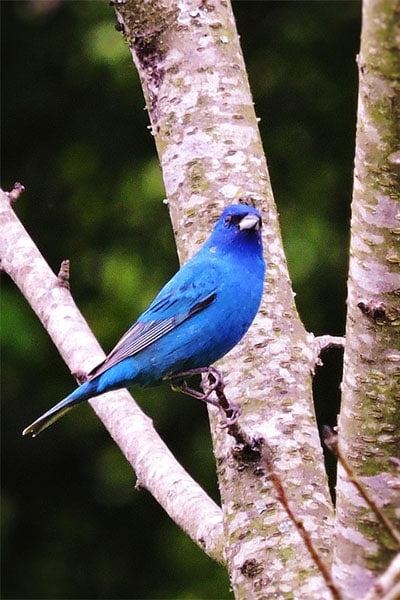
Indigo Buntings show a different color pattern outside the breeding season.
During winter, you’ll notice how male Indigo Buntings lose a bit of their blue color. Instead, their bodies become a mix of blue and brown that is very noticeable in their chest area. Females, on the other hand, show a bit of reddish-brown color on their breast area.
Indigo bunting bird vocalization
Where You’ll See Indigo Buntings
Indigo Buntings are common all over the eastern part of North America. Their breeding range starts in North Dakota, going down to Texas, extending east to the northern part of Florida, and even reaching Maine.
These birds are often seen in areas with my brushes and weeds like in the edges of woods, along the roads or streams, railways, and even in power lines. You might also see them in open deciduous woods and swamps.
These birds are often seen in open grasslands, savannas, and other open habitats in their wintering grounds.
Indigo bunting bird migration
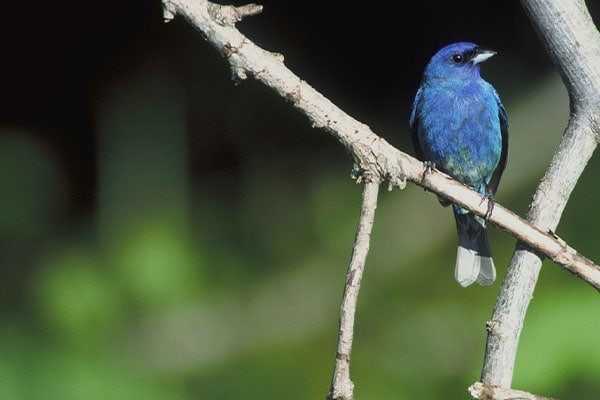
Indigo Buntings are long-distance migratory birds. These birds would usually fly several miles away from their breeding grounds in the northeastern part of the US to fly down south to southern Florida, Mexico, and Central America. On rare occasions, some birds are also seen in the northern part of South America.
These birds mainly travel at night. They would usually arrive back at their breeding grounds mid-April and early-June, then they would travel out during the fall in mid-September to mid-October.
Indigo bunting diet
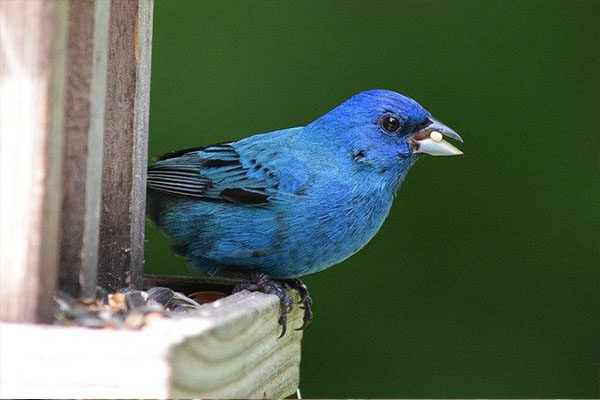
Indigo Buntings eat both seeds and insects, depending on the season.
These birds would eat lots of insects during the summer, including caterpillars, spiders, and beetles. They would complement this with some berries and fruits like thistles, dandelions, blueberries, blackberries, strawberries, and rice grains.
When winter comes, and insects are not as abundant, the birds would prefer to eat more fruits and berries. These birds are also frequent visitors of backyard feeders.
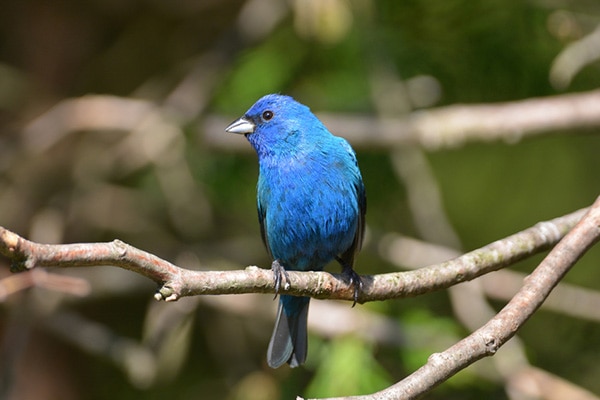
Indigo bunting nesting
- Clutch Size: 3-4 eggs
- # of Broods: 1-3 broods
- Incubation Period: 11-14 days
- Nestling Period: 8-14 days
- Egg Description: Clear white; sometimes there are a few brown spots
Indigo Buntings are known as monogamous birds, but it’s observed that couples only stay together until incubation. The breeding season often starts between May and September and usually happens in open areas like fields, wood edges, and roadsides.
The female Indigo Bunting chooses the nest’s location, which is usually just one to three feet above the ground. It’s also the female bird that builds the nest as the male bird watches.
The nest is like an open cup made of leaves, stems, bark, and grasses weaved together. This is then held together by a spider web. The nest is then lined with soft materials like thin grasses, strips of thin barks, rootlets, and some animal hair.
Indigo bunting behavior
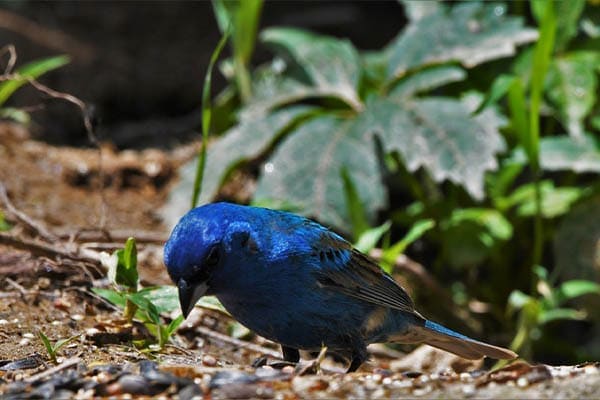
Indigo Buntings are not the most social birds. During the breeding season, they can be very territorial and would often search for food alone. When it’s winter, they often forage in small groups, but you’ll still see some birds who prefer to be alone.
These birds would usually search for food low on the ground, unlike other birds who prefer to search from higher areas. You’ll often see them hopping on the ground or even cling to stems while in search of food.
How-to attract indigo buntings
Surely, everyone would love to attract these beautiful birds in their yard. Their bright blue colors are a sight to see, especially in the summer season.
These birds are certainly not the easiest birds to attract. However, if you can meet their requirements, they might come to visit your backyard.
Remember, seeds and insects are the best foods for these birds. So, you can start by making your yard more insect-friendly by stopping the use of pesticides. Then you can hang some bird feeders filled with Nyjer seeds, sunflower seeds, miller, and even cracked corn.
These birds also love berries and fruits, so you can certainly plant some of their favorite shrubs like the American Elderberry and Red Mulberry. The Wild Blackberry will be a perfect food source and a nesting site for these birds.
You should also note that these birds love open areas, so ensure that your area is not too crowded for them. You should add a birdbath, too, so these birds have a water source.
Indigo bunting threats
Although there is a decline in their numbers, Indigo Buntings are still abundant within their range.
It is believed that the decrease in numbers is related to the loss of habitats and food sources due to reforestation, agriculture, mowing of fields and roadsides, and human development. Added to that, it has also been found that these birds are hunted down in some of their wintering areas.
Another seen threat is their migration, where many birds will diet due to collisions into buildings and towers. The fact that these birds also breed low on the ground and sometimes on roadsides can lead to them getting hit by vehicles.
Indigo Buntings also have predators that usually target their youngs, including foxes, cats, blue jays, and raccoons.
Indigo bunting fun & interesting facts
- Indigo Buntings learn songs while they’re young from male Indigo Buntings nearby.
- Despite their looks, these birds lack blue pigment in their feathers.
- These birds migrate at night and are said to use the stars as guides.
- A local Indigo Bunting song can last for up to 20 years.
- The oldest recorded Indigo Bunting was 13 years and three months old.
- Hepatic Tanager
- Summer Tanager
- Scarlet Tanager
- Western Tanager
- Northern Cardinal
- Pyrrhuloxia
- Rose-breasted Grosbeak
- Black-headed Grosbeak
- Blue Grosbeak
- Lazuli Bunting
- Varied Bunting
- Painted Bunting
- Dickcissel

